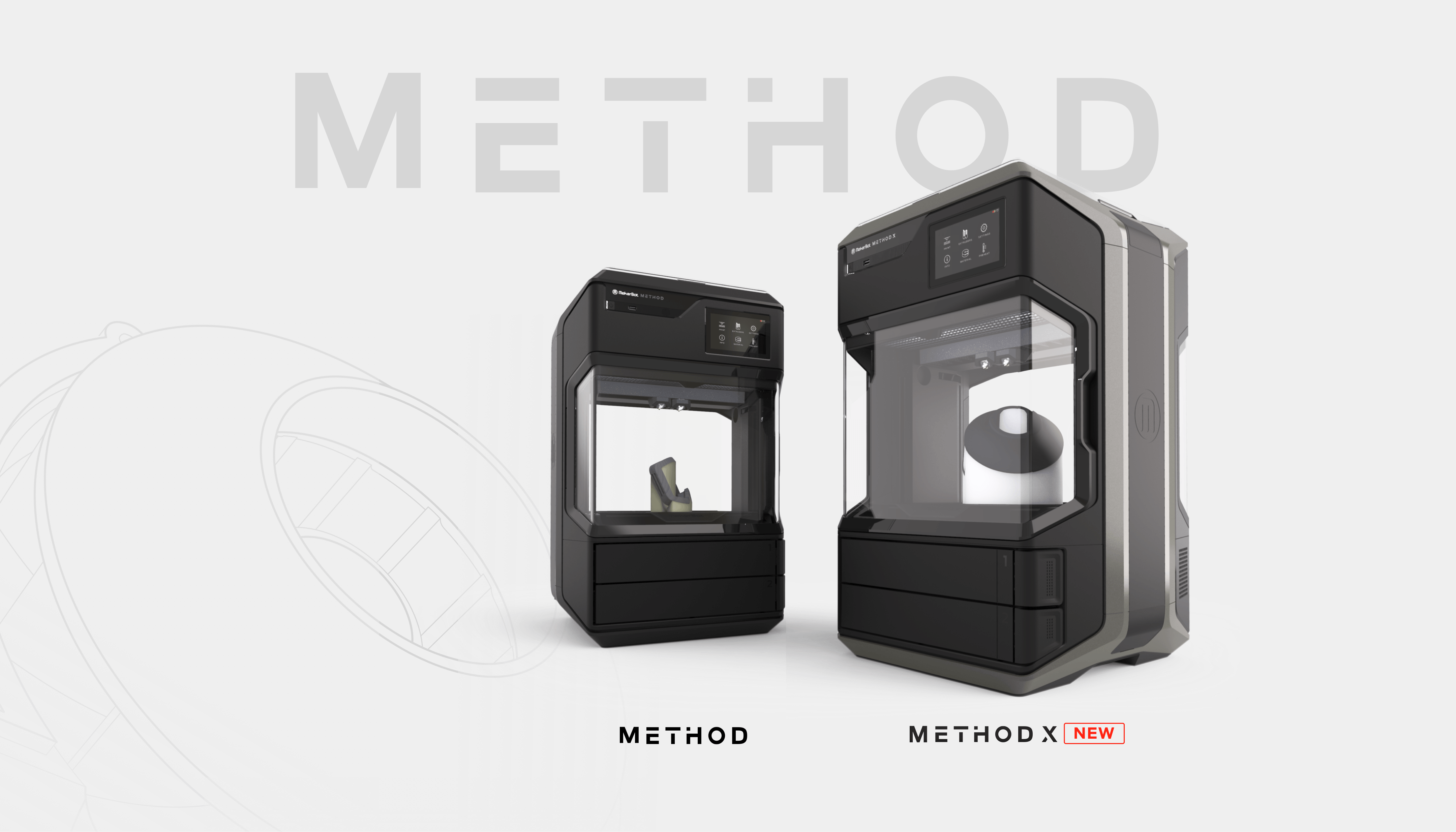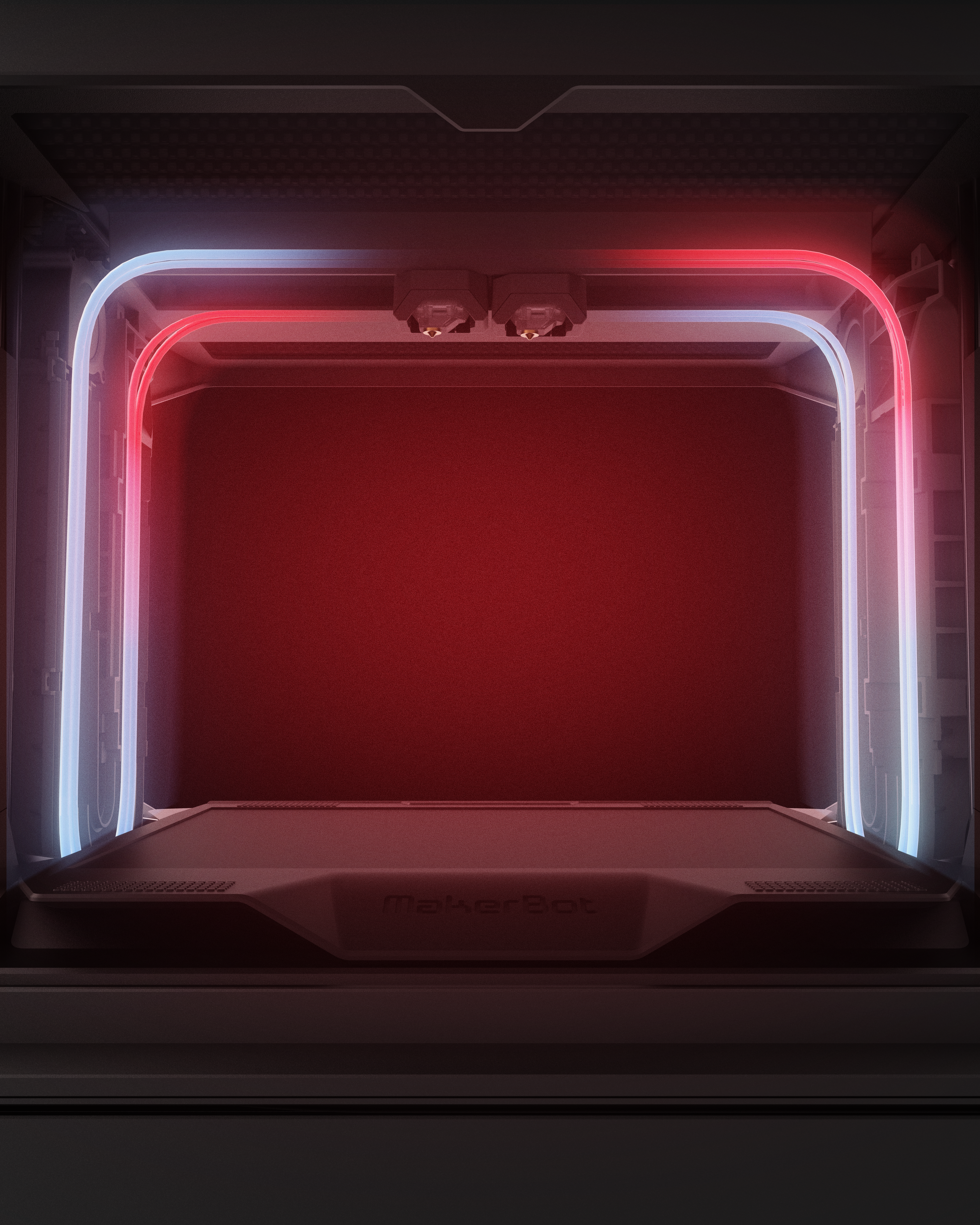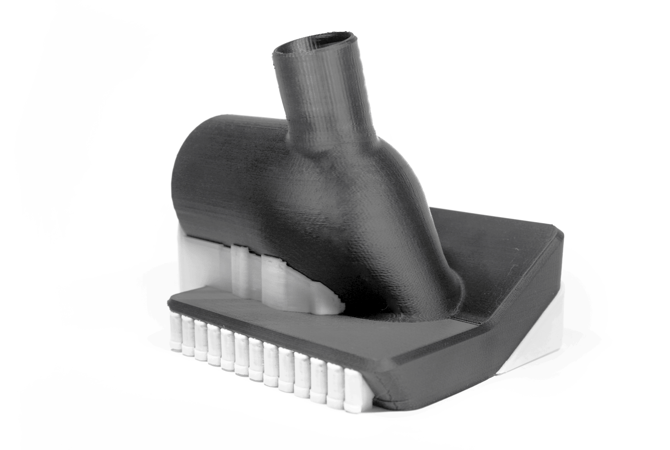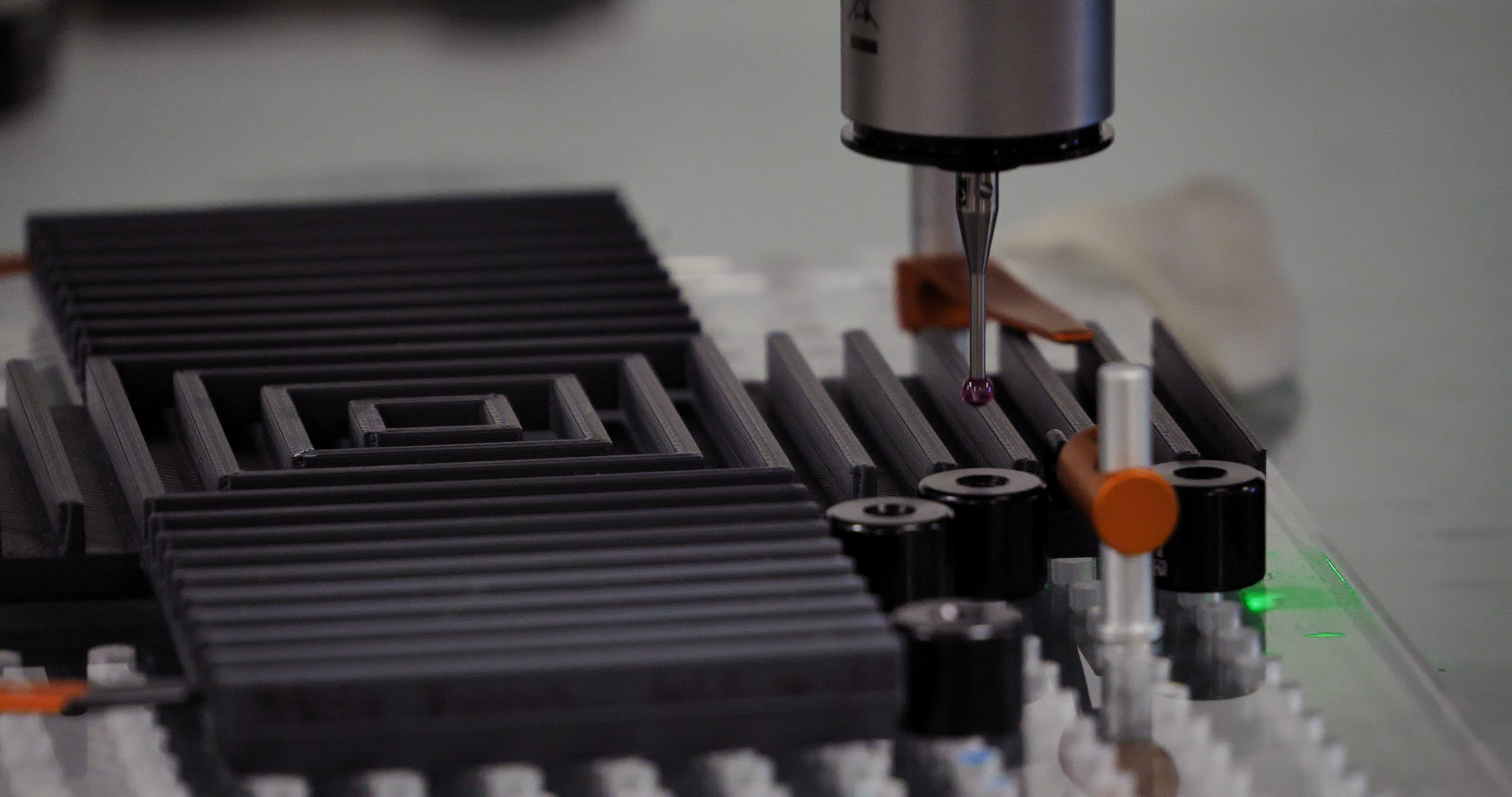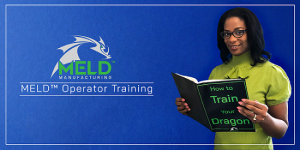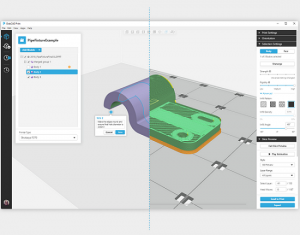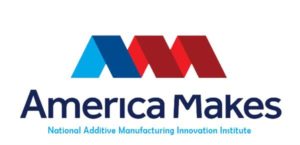I kept hearing from people about Michael Gorski and Filament Innovations. I was repeatably told that in Pennsylvania a small firm was making open FDM systems made for manufacturing. I’ve predicted for a number of years now that the small scale open desktop FDM systems, first not suitable for much of anything, would morph into the manufacturing systems of the future over time. I really think that for large objects such as car bumpers or dashboards medium format FDM will be the technology of choice while for many smaller parts clusters of FDM printers will be the norm. Open FDM just gives you tough, dimensionally accurate parts at low cost without a lock in with a materials vendor or an OEM. For many industries at volume I think that open FDM is the manufacturing solution of the future. For that to happen we need intelligent clusters of machines (which Ultimaker and Prusa seem to be working on) and much more reliable medium format machines with high throughput, yield, and repeatability. The latter challenge is what Filament Innovations is taking on.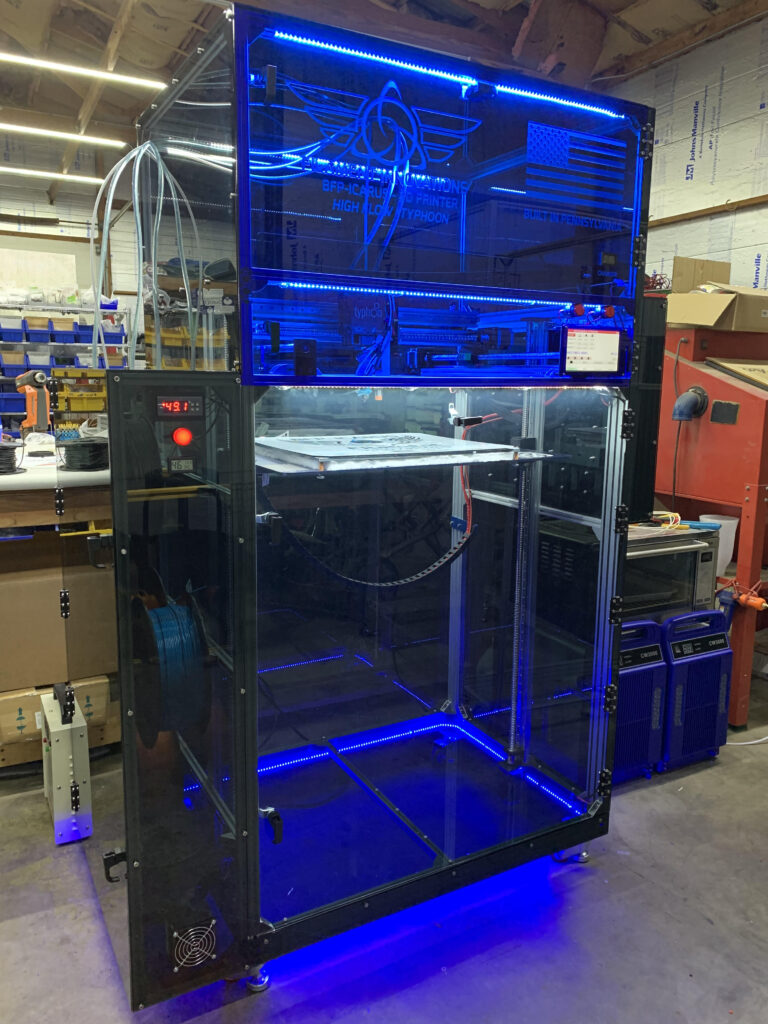
What is Filament Innovations?
Filament Innovations is a family-owned FDM 3D Printer manufacturer located near Allentown, Pennsylvania. We focus on selling FDM printers to businesses across America. We specialize in advanced 3D Printers that are both robust and affordable for all size businesses. We really pride ourselves on the level of quality and craftsmanship that goes into each 3D Printer we build. We often tell our customers that we are the “hot rod shop” of 3D Printers as we can custom build a printer to suit a customer’s needs.
When and why did you start it?
The company was started in October 2015; when we launched we were not building printers, but selling our own private line of filament. As FDM 3D Printing grew, we saw the hardware market get split into two segments – the “race to the bottom” imported printer and the expensive larger format printers, costing over $50,000. Many business owners who wanted to adopt FDM 3D Printing were scared of the lack of after-sales support and reliability from the imported machines, or did not have $50,000 on hand for a capital investment to buy a more well-known machine. With that in mind, we quickly saw market opportunity for a large scale, American built, and high quality FDM unit in the $15,000 – $20,000 range.

Tell us about your Icarus printer?
Our BFP-ICARUS 3D Printer is the backbone of the company. Our business model is simple, make the best printer we can with no cheap add-ons and sell it for one flat, shipped price with as many USA components as possible. At $15,000 shipped via LTL Freight, our BFP-ICARUS is a leader in the FDM market in terms of quality and craftsmanship. Our linear motion system is a full ballscrew design with HiWin linear rails and TBI ballscrews, running on custom made NEMA 23 motors. Our extrusion system is produced by Dyze Designs, with their PRO series hotend and extruder combination, which comes equipped with a PT100 sensor and Tungsten Carbide nozzle. Every printer is factory equipped with a Gecko print plate, allowing customers to print common filaments and have them release easily with the removable print plate. The entire frame of the printer is wrapped in quarter inch Optix USA Made acrylic which stiffens the entire body of the unit so you don’t have to worry about any frame slag or shaking. The build area satisfies customers’ needs at 470x381x915 (mm).
What kind of customers buy it?
We love selling printers to industries that put them to work and use them on a daily basis. The majority of our customers are in the Prosthetics and Orthotics industry where they print customized below the knee check sockets for patients. Since every prosthetic socket is unique, this is a great application for our BFP-ICARUS units. Beyond the O&P market, we also work with the US Army Research lab and the Navy, specifically NAWC (Naval Air Warfare Center). We are continuing to grow our relationship with other defense departments and are in the planning phase of putting more BFP-ICARUS units into defense work soon.
What makes it different?
What makes the BFP-ICARUS different in terms of being an FDM Printer, and Filament Innovations different in terms of being a FDM manufacturer, is how we do business in the industry. At Filament Innovations we are not selling you a product and then moving on to the next customer, we are creating a partnership to bring FDM 3D Printing into their company. Businesses can be hesitant to buy an FDM 3D Printer because they do not know what they need it for, how to run it, or how to service it. We get to know each customer and their business individually and help them understand how FDM 3D Printing can help their business. For example, when you buy a BFP-ICARUS unit, we schedule a two to three hour video chat with you on the day you receive it (Skype, FaceTime, etc). On that chat, we walk around the printer with you and go over its basic operations and how to maintain it. We really go the extra mile in terms of customer service and that is why our customer’s come back to use for future printers. Plus, as a fun “wow” moment for the customer, we laser etch their logo right next to ours on every machine that goes out the door. This gives our customer’s a personal touch that provides them confidence in their decision of partnering with Filament Innovations.

How capable is it?
The unit is extremely capable in terms of what it can do as the unit is enclosed, the Dyze PRO series hotend can go to 450C with ease, and the unit comes with all the bells and whistles you would want (auto bed leveling, independent Z motor bed leveling, WiFi, etc). The one unique selling points that really impresses our customers is its upgradability for the extrusion systems. Filament Innovations may have one of the best relationships in the history of FDM with Dyze Designs. We have made every BFP-ICARUS unit upgradable to accommodate Dyze’s 2.85mm high flow Typhoon system and the Pulsar pellet extrusion system. This means customers can buy one 3D Printer, and upgrade that one unit to a high-flow filament or pellet extrusion system once these systems come to market. For example, in the prosthetics industry, a below the knee socket is a large, relatively basic, but unique shape that needs to be printed quickly. Customers who choose to buy their BFP-ICARUS now can get their feet wet with 3D Printing and then buy the upgrade kits to retro-fit their 3D Printer as Dyze Designs releases these new systems. We designed our BFP-ICARUS platform with ballscrews for a reason, it can handle the additional weight of these extrusion systems out of the gate, which means customers do not need to buy an additional printer. This is just another example of how we are putting the customer’s needs first and not forcing them to buy an entirely new printer.
The post Michael Gorski of Filament Innovations On FDM for Manufacturing appeared first on 3DPrint.com | The Voice of 3D Printing / Additive Manufacturing.

